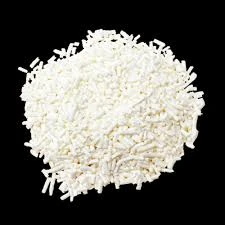
pet food additives
Understanding Pet Food Additives What Every Pet Owner Should Know
Pet food additives are substances added to pet food to enhance its nutritional value, preserve freshness, improve palatability, or facilitate the manufacturing process. As pet owners, we often focus on the primary ingredients of our pets' diets – the meat, grains, and vegetables – but understanding the role of additives is equally important to ensure we are providing our furry companions with a balanced and safe diet.
Types of Pet Food Additives
Pet food additives can be broadly categorized into several groups
1. Nutritional Additives These are vitamins and minerals essential for pet health. For example, taurine is crucial for cats, and omega-3 fatty acids support skin and coat health in both dogs and cats. Nutritional additives ensure that pets receive a balanced diet, especially when certain nutrients might be lacking in the main ingredients.
2. Preservatives To maintain freshness and prevent spoilage, preservatives are often included in pet foods. Natural preservatives like tocopherols (vitamin E) and ascorbic acid (vitamin C) are preferred, while synthetic options like BHA and BHT are sometimes used as well. Although effective, synthetic preservatives can raise concerns among pet owners regarding their long-term effects.
3. Flavor Enhancers To make pet food more appealing to pets, flavor enhancers are used. They can be derived from natural sources or synthetically produced. While these additives increase palatability, it’s essential to ensure they do not contain harmful chemicals that could negatively impact your pet's health.
4. Thickeners and Binders Ingredients like guar gum, xanthan gum, or carrageenan serve to improve the texture of pet food. These additives help to maintain consistency, particularly in wet foods, and can make the product more enjoyable for pets.
pet food additives

5. Color Additives While colors may be more relevant to human food to make it visually appealing, some pet foods contain color additives. However, most veterinarians agree that pets do not require color in their food, and many pet owners prefer to avoid coloration substances.
The Importance of Choosing the Right Additives
Not all pet food additives are created equal. When selecting food for your pets, it is essential to look for high-quality products that include safe and beneficial additives. Reading labels can help pet owners make informed choices. Ingredients listed should be recognizable and sourced from reputable suppliers.
The Association of American Feed Control Officials (AAFCO) provides guidelines and standards for pet food labeling, which can guide pet owners in understanding whether they are selecting a safe product. Foods that meet AAFCO standards typically provide assurances regarding the quality and purpose of their ingredients.
Potential Concerns
While many additives are harmless and can even be beneficial, some may pose risks. For example, certain artificial preservatives or fillers may lead to allergies, digestive issues, or other health concerns over time. It’s important to monitor your pet for any adverse reactions when introducing new foods and consult with a veterinarian if you have concerns about specific additives.
Conclusion
Pet food additives play a significant role in the overall quality and safety of pet diets. By understanding the various types of additives and their purposes, pet owners can make informed choices that promote their pets’ health and well-being. As responsible pet owners, being mindful of the ingredients in pet food will ensure that we feed our beloved companions a nutritious and balanced diet, free from potentially harmful additives. Always consult with a veterinarian when in doubt, as they can provide tailored advice based on your pet’s specific needs.
-
Understanding Synthetic Rubber OptionsNewsApr.27,2025
-
Trichloroisocyanuric Acid: Essential for Clean and Safe WaterNewsApr.27,2025
-
Sodium Dichloroisocyanurate: Key to Safe Water TreatmentNewsApr.27,2025
-
Sodium Acid Pyrophosphate: Essential in Modern Food ProcessingNewsApr.27,2025
-
Essential Water Treatment ChemicalsNewsApr.27,2025
-
Denatured Alcohol and Its Industrial UsesNewsApr.27,2025
-
The Versatile Uses of Sodium BicarbonateNewsApr.24,2025
Hebei Tenger Chemical Technology Co., Ltd. focuses on the chemical industry and is committed to the export service of chemical raw materials.
-

view more DiethanolisopropanolamineIn the ever-growing field of chemical solutions, diethanolisopropanolamine (DEIPA) stands out as a versatile and important compound. Due to its unique chemical structure and properties, DEIPA is of interest to various industries including construction, personal care, and agriculture. -

view more TriisopropanolamineTriisopropanolamine (TIPA) alkanol amine substance, is a kind of alcohol amine compound with amino and alcohol hydroxyl, and because of its molecules contains both amino and hydroxyl. -

view more Tetramethyl Thiuram DisulfideTetramethyl thiuram disulfide, also known as TMTD, is a white to light-yellow powder with a distinct sulfur-like odor. It is soluble in organic solvents such as benzene, acetone, and ethyl acetate, making it highly versatile for use in different formulations. TMTD is known for its excellent vulcanization acceleration properties, which makes it a key ingredient in the production of rubber products. Additionally, it acts as an effective fungicide and bactericide, making it valuable in agricultural applications. Its high purity and stability ensure consistent performance, making it a preferred choice for manufacturers across various industries.











